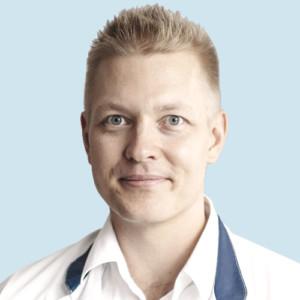How are angiomas treated?
Angiomas are treated with KTP, Nd:YAG, alexandrite and pulsed dye lasers, as well as IPL light therapy devices. These device-based treatments are excellent treatment forms for angiomas. We mainly use the KTP laser because KTP laser treatment has a very low risk of scarring, and the recovery time is the shortest and least problematic.
What is the effectiveness of vascular lasers based on?
The effectiveness of the treatment is based on selective photothermolysis. The laser or IPL light heats the blood vessels’ haemoglobin and causes the vessel structures to break down. The body’s immune system removes the broken down vessel structures within a couple of weeks.
What types of angiomas are treated?
We use laser treatment to remove, for example, spider angiomas, cherry angiomas, lip varices and port-wine stains.
A spider angioma (spider naevus) consists of a central vessel and radiating capillaries. A spider angioma on the face is easy to remove, for example, with a KTP laser. Usually, a single treatment session is sufficient.
A venous lake is a dark blue varicosity of the lip, which is effortlessly removed with an Nd:YAG or alexandrite laser. One treatment session is often sufficient.
A cherry angioma is a 2-5 mm bright red angioma. Growths usually develop on the skin with age. Cherry angiomas are easy to remove with a KTP laser, and up to dozens can be removed during the same treatment appointment.
A port-wine stain (naevus flammeus) is a congenital capillary malformation, which colour varies from pink to dark red. Port-wine stains are treated with vascular lasers and IPL light therapy devices. A port-wine stain will fade with a series of 5-10 treatment sessions so that, on average, half of the patients will achieve a 50% treatment response.
Does the laser treatment of angiomas hurt?
Laser treatment can be felt as a burning, sting-like pain. The pain is not intense, and it is short-term. Local anaesthetics are usually not used in the treatment of angiomas because anaesthetics constrict blood vessels and weaken laser treatment efficiency.
What are the after-care instructions?
When treating small angiomas, a scab will form on the treatment site, which will detach by itself within a week. The skin can be washed as normal. The treatment result is visible within 2 weeks after treatment. When treating port-wine stains, scabs can form over a period of 2 weeks, and the actual treatment result will be visible 2-3 weeks after treatment. When treating a port-wine stain, sauna and vigorous exercise is avoided for 3-5 days.
How do I access treatment?
An appointment is booked with a dermatologist. The treatment of small angiomas can often be carried out already during the first appointment.
Book an appointment now!
Rovaniemi →Mikkeli →
Vantaa →
Hämeenlinna →
Jyväskylä →
Kokkola →
Kouvola →
Kotka →
Kuopio →
Lahti →
Lappeenranta →
Oulu →
Pori →
Seinäjoki →
Tampere →
Vaasa →












